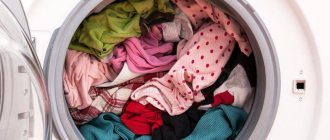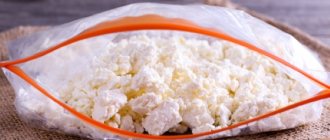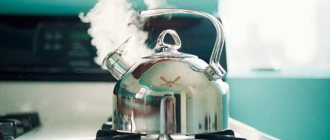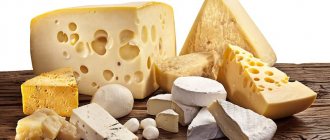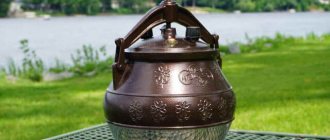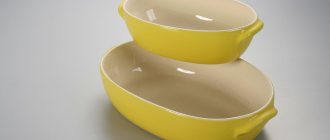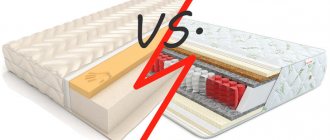Honey is famous for its nutritional and healing properties. It is used almost everywhere - as a dietary supplement, skin and hair care products are made on its basis, and drugs are also prepared that help overcome various diseases. But some recipes require the use of this product in a warm liquid state, which raises quite logical questions - is it possible to heat honey and whether it will not lose its unique qualities.
In addition to all of the above qualities, honey is able to keep food fresh for a fairly long period of time. This property was known back in ancient Greece, when they preserved meat, which could remain fresh under a honey “coat” for about five years. The Egyptians used honey for embalming. It is able to preserve and protect a wide variety of food products from spoilage. For example, if you preserve butter in honey, it will not spoil for six months. Animal products coated with it can be stored at room temperature for four years, maintaining their freshness and natural taste. This quality of honey is due to the fact that it contains biologically active substances obtained from plants and the body of bees.
Is it possible to heat honey?
It’s worth figuring out whether it’s possible to add honey to baked goods. For baking, as a rule, it should be liquid. To melt the thick sweet mass, it must be heated. Therefore, lovers of homemade confectionery products should know whether honey can be heated.
The product intended for human consumption does not require additional heating. However, heating may be necessary for:
- preparation of confectionery products;
- cosmetic procedures;
- treatment according to traditional medicine prescriptions;
- packaging for sale of a product that has already been candied.
Under the influence of high temperatures, the properties of this useful product change greatly.
Of course, for this purpose you can slightly increase the temperature. But this must be done in such a way that the valuable beekeeping product does not lose its beneficial properties. If the heating season is in full swing, this is quite simple to do: just hold the container with honey near the radiator. Heating will take a long time, but it will be gradual and not sudden; under such conditions it is easy to achieve the desired temperature.
Does honey become poisonous when heated?
You can hear a variety of opinions about whether it is possible to boil honey, even a categorical ban. Some beekeepers believe that this valuable product turns into a deadly poison when heated. However, this is actually not the case because:
- heated honey does not contain carcinogens or toxins;
- The breakdown products of sugars do not benefit the body, but are not harmful either. In addition, their concentration in the heated mass is quite small;
- This valuable heat-treated product has long been used in cooking to add a sweet taste to baked goods (and is also used as a marinade for baking chicken). It is used by both home and professional chefs;
- In order for the breakdown products of glucose and fructose to become poisonous, honey must be heated to a very high temperature. This is impossible at home.
Thus, a valuable beekeeping product, which is heated in a water bath, turns into another substance with a different chemical composition. But this substance in itself is not poisonous.
Experienced beekeepers categorically do not recommend using a microwave oven for heat treatment, since in this case the heating will be uneven. However, when it comes to a microwave, the same applies
Does honey lose its properties when heated?
Beekeepers and scientists have long debated whether honey can be heated. They also argue about the temperature to which honey can be heated. For all lovers of this product, it is important to know whether honey loses its properties when heated. Experts say that with slight temperature exposure, the beneficial properties are preserved. However, if you heat this substance to 40 degrees or higher (and some experts consider a temperature of +20 degrees “critical”), the beneficial substances gradually begin to evaporate. Thus, with prolonged thermal exposure, biologically active components such as:
- flavonoids;
- natural antioxidants;
- vitamins;
- substances that give a characteristic pleasant sweet aroma.
It is strictly forbidden to store honey near steam heating radiators or in the sun.
In fact, only sugars remain in the composition - glucose and fructose. When heated, honey can hardly be called a “natural antibiotic” or “medicine.” It will turn into a sweet liquid that is poor in composition, and will also lose its unique smell. That is why it is strictly forbidden to store it near steam heating radiators, in the sun (for example, on the windowsill of a south-facing window) or in a room where it is very warm. Storage temperature should not exceed +25 degrees.
Note! You shouldn't use the refrigerator either. Cold contributes to the disappearance of many useful components and also destroys the structure of the product.
What happens when heated?
It is not difficult to figure out how to properly heat treat this unique product. The main thing is to understand what happens to it when the temperature rises to a certain point and why honey should not be heated too much.
+40°C
Having reached this temperature, honey loses a small amount of its healing and nutritional properties. This is a critical point, and if you continue heating, then at best you will get an ordinary sweet syrup with a high content of fructose and glucose from a useful beekeeping product.
At +40°C honey loses its original color, becoming slightly darker, in some cases acquiring a rich brown tint. Bactericidal properties and aroma are also affected. The faster and longer the heating occurs, the worse the quality of honey will become.
+45°C
At this temperature, enzyme destruction begins. This process occurs almost instantly, and it is impossible to stop it. At the same time, honey loses its energy and nutritional value.
Recipes for cold remedies using honey
A similar effect is obtained if you add honey to too hot tea or milk. Therefore, in order to get the maximum benefit from this product, it is better to use it separately or, as they say, “in a bite.”
+60°C and above
The +60°C mark can be dangerous, as there is an opinion that beyond it, honey becomes carcinogenic. There is an increase in the level of hydroxymethylfurfural, which is formed from saccharides. This is an intermediate toxic product resulting from the decomposition of sugars. Its concentration affects the shelf life of honey and makes it possible to distinguish counterfeit from a natural, high-quality beekeeping product.
Advice! Try to store and consume honey in its natural state, without heating it unless absolutely necessary.
Thus, the question of whether honey can be boiled becomes completely irrelevant.
To what temperature can honey be heated?
Experienced beekeepers and chemist experts unanimously agree that this product should be heated very slowly, because:
- heating up to 20 degrees is absolutely harmless;
- if the substance heats up to 20 - 35 degrees, the beneficial properties gradually begin to evaporate;
- at +40, a healthy and nutritious product turns into sweet, odorless melted water;
- when heated from +40 and above, the breakdown products of sugars begin to be released; some of them can be harmful to health and cause allergic reactions.
It is best to heat in a water bath, over low heat.
Since heating with a thermometer in your hands is quite difficult, it is best to do this in a water bath over the lowest heat. In this case, you need to constantly be at the stove and monitor the temperature. As soon as it approaches 40 degrees, the product is immediately removed from the heat.
What is released when heated?
In newspapers you can often find notes that honey turns into poison when heated. Contrary to popular belief, heating does not release carcinogens that cause cancer. However, under the influence of temperature, that is, when heated, the sugars included in the product break down into individual components. These organic compounds do not provide any benefit to the body. Moreover, in some people (but not all) they can cause allergic reactions or individual intolerance. But food poisoning caused by eating overheated honey is very rare.
Note! Most often, such poisoning is caused not by honey itself, but by a large amount of it eaten at one time.
How to distinguish heated honey
Unscrupulous beekeepers or sellers often resort to heating when they want to pass off an old product as fresh. Often none of them thinks about compliance with heating technology. It is not so difficult to distinguish such a product:
- more liquid, watery structure;
- lacks taste and pronounced aroma;
- unnaturally dark color.
Based on all of the above, we can draw the following conclusion. To preserve the beneficial properties of the product, it should not be heated above 40 degrees. Honey heated above 60 degrees becomes potentially carcinogenic, which is why some equate it to poison.
Why you can't heat bee honey
When asked why you can’t heat honey, experts answer unequivocally: you can’t, because this product ceases to be honey. Anyone who remembers a school chemistry course can guess what will happen if you heat bee honey. The chemical composition of the “natural antibiotic” changes significantly. Accordingly, this substance can no longer be used for the treatment and prevention of various diseases, as well as for the prevention of vitamin deficiency. Moreover, an overheated bee product is much more likely to cause allergies than one that has not been heated.
Refutation?
Some sources claim that the dangers of heated honey are a myth. This myth is based on the fact that when heated, hydroxymethylfurfural or OMF is released. In honey, the source of OMP is fructose. When heated, it disintegrates and a certain amount of OMP is released. It is important to note that OMP is present in all sweet products that were heated during the manufacturing process: candies, jam, biscuits, coffee, sweet soda water and much more. At the same time, GOST determines the maximum content of OMP in honey - no more than 25 mg/kg, and the content of OMP, for example, in soda can reach 300-350 mg/l, and in roasted coffee up to 2000 mg/kg. But even in such concentrations, OMF is absolutely safe for humans. Speaking about honey, we can responsibly state that even if you boil it, you will not be able to reach such a concentration of OMP that it becomes dangerous to the body.
Thus, it is concluded that when honey is heated and even boiled, it remains absolutely safe for the body, although it loses its beneficial properties. After all, the main benefits of honey are glucose and fructose, which break down at temperatures above 40 degrees Celsius. In order for honey to remain just as healthy, it either does not need to be heated at all, or gradually heated to 40 degrees over low heat and preferably in a water bath.
If you like tea or coffee with honey, eat it as a bite, so you will not only enjoy the taste, but also get a boost of health and vigor. When it comes to cooking hot dishes with honey, feel free to heat the honey if the recipe calls for it. The beneficial properties of honey will not be preserved, but this will not affect the taste.
How not to drown honey
There is a big misconception about the harmfulness of drinking honey with tea. It is misleadingly claimed that placing honey in hot water releases dangerous toxins. This is not entirely true. When fructose is heated, a substance called hydroxymethylfurfural begins to be released. And this substance is found in all products containing sugar. For example, in coffee beans, in sweet baked goods. There is verified information about studies on rats. The substance causes mutations and is toxic to rodents. But the harmful effects on humans are unknown, as they have not been proven.
You should not heat the product above 50C , since sweetness at elevated temperatures loses useful antioxidants and enzymes, fructose breaks down into hydroxymethylfurfural and honey becomes caramel.
You shouldn't melt honey too often . The beneficial properties will quickly disappear. It is better to melt the sweetness in small portions and use it immediately.
Tested dishes
Honey melting containers play a major role in the safe preservation of product parameters. Beekeepers use wooden, glass or clay containers to store nectar. All of them performed well in melting nectar. But glass and ceramic products are considered the best containers for melting honey. It is customary for beekeepers to keep honey in aluminum cans. Aluminum is a non-hazardous alloy for melting a delicious product.
The only substance that is inappropriate for high temperatures is plastic. It is forbidden to melt honey in containers made of this material. When reaching high temperatures, plastic releases harmful substances. They distort the taste and aroma of honey.
How long can honey be heated without harming its quality?
- To prepare for packaging, honey is usually dissolved in a water bath, where it is heated from 45 to 50⁰C. Such heating for two days does not lead to a significant increase in the amount of hydroxymethylfurfural, and the values of this substance remain within the normal limits of the standard.
- When honey is heated to 80⁰C for 2 minutes and then rapidly cooled, hydroxymethylfurfural also does not have time to form in a more or less significant amount, the honey remains almost the same quality as before heating.
- Thus, the amount of hydroxymethylfurfural in honey is directly proportional to the time and intensity of its heating.
- With prolonged heating above 50⁰C, some vitamins and enzymes of honey are destroyed, which changes its biological properties.
Myths about the dangers of heating
There is an assumption that during the heating process, a dangerous toxin is formed in the product - hydroxymethylfurforal (OMF). It has a destructive effect on the body and in excess amounts causes disruption in the functioning of the intestines.
OMF is generated due to the breakdown of fructose, which is present not only in honey, but also in other sweets. According to GOST, the concentration of the substance in a beekeeping product is no more than 25 mg per 1 kg (in hot climates the figure reaches 40 mg).
This is a small dose that is not capable of causing severe damage to the body and causing food poisoning or cancer. To destroy the myth, it is enough to estimate the concentration of hydroxymethylfurforol in carbonated drinks - 300 mg. In roasted coffee beans the amount is 80 times higher.
The content of OMF is regulated not to eliminate the risk of carcinogens entering the body, but to monitor compliance with product processing technology.
Therefore, the possible harm of honey when heated is greatly exaggerated. The risk of poisoning remains only with frequent consumption of a hot product. And to convert the sweet mass into poison, you will need to heat it to a critically high temperature, which cannot be done at home.
However, overheated honey remains dangerous and has a number of contraindications. With one-time consumption, negative changes in the body will not appear, but if you regularly eat such a delicacy, you can provoke convulsions and even paralysis.
Heating for 24 hours at a temperature of 50°C increases the concentration of OMF.
How to reheat correctly?
When heating honey, the process must be followed correctly. Let's look at the most popular methods.
Microwave
Many people resort to using a microwave oven, as it is very quick and easy. But in this case, you simply say goodbye to all the healing qualities of the product. Attention! Remember, the thermometer mark +40°C is critical. You can't cross it. A microwave causes irreparable harm to the composition of honey. Why can’t you heat honey in a microwave? This device is capable of heating food at fairly high power. Even if you turn it on for a few seconds, the heating intensity will still be too strong and the healing nectar will instantly lose all its properties.
Using heated honey for various purposes
In some situations, a heated product is needed; it is used as a food additive, added to cosmetics for the face and hair. Many pharmacological preparations use heated honey. Masks and creams with heated bee product are easier to apply. Candied nectar is poorly soluble, the particles are hard and negatively affect the condition of the skin and hair. Also, this type of honey is poured into different vessels. Heating honey is allowed, but not at too high temperatures. If it exceeds 40 degrees, there will be syrup with sugar, without enzymes, glucose, fructose. The product begins to lose its color, become dark, and sometimes may be brownish. The bactericidal effect and energy elements are lost. This can happen when a person prepares a cold medicine with milk and adds a bee product, such a drink is useless.
How can you use superheated honey?
Overheated honey – heat treated at temperatures above 60 degrees. It may have lost most of its medicinal properties, but this does not mean that such a product is completely useless. It can be used:
- in cooking;
- cosmetology.
This bee product, without creating a danger to human health, is used to prepare desserts and a variety of baked goods. The amount of potentially toxic substances in the dish will be negligible, and the pleasure gained from eating it will be unforgettable.
In addition, we should not forget about the positive effect of using honey in cosmetology. This product is perfect for making hair and face masks or anti-cellulite massage (read more about honey massage).
Is it harmful to add honey to hot tea?
Now it’s logical to approach the key question. Will hydroxymethylfurfural form in honey that is added to hot tea? Even if it does, it will be in a very small amount, completely insignificant. Honey dissolves in hot tea, and the concentration of sugars decreases. The acidity of the environment also decreases. The amount of honey that you added to the tea will not be capable of causing harm in any way, especially considering the insignificant fraction of the increase in the concentration of hydroxymethylfurfural. Honey does lose a significant portion of its vitamins and enzymes when heated in hot tea. But it is worth knowing that initially the concentration of vitamins in honey is not so high, and was previously exaggerated. This is not a vitamin preparation, although it contains vitamins.
But breaking down honey's potential allergens—proteins, enzymes, vitamins—may even be beneficial for people who suffer from food allergies, as well as for young children who are at increased risk of allergies. When honey is heated, enzymes and some vitamins are destroyed, releasing mobile metal ions that activate the action of many biological catalysts in the human body. If you eat heated honey, the ions of potassium, sodium, copper, zinc, magnesium, manganese, iron and other elements enter into reactions that ensure normal cell activity, and are also included in enzymes that regulate various chemical reactions.
How to melt honey in a glass jar?
Many people store the amber delicacy in three-liter glass jars. Therefore, when it takes on a solid form, it is almost impossible to get it out. You can make the task easier in one of the following ways. This is done using:
- Water bath.
- Sun rays.
- A regular heating radiator.
- Warm water.
Taiga honey: beneficial properties and contraindications
Let's look at each method.
How to melt honey in a water bath?
For this heating method you need to prepare:
- Large and small saucepan.
- Glass jar with candied honey.
- Metal grate.
- Thermometer.
- A spoon.
To properly melt honey in a water bath without losing its healing properties, you need to pour water into a large saucepan and place a small one in it steadily. It is important that the smaller container does not touch the walls and liquid level in the larger one. Next, pour some water and place a wire rack on which you place a jar of thick treat. Place the outer pan on the fire and monitor the temperature of the water in it; it should not rise above 50 degrees. For measurements, use a regular street thermometer.
When the temperature rises to this point, turn off the heat and wait about 20 minutes. Stir the honey carefully , this will speed up the melting process. If the temperature reaches 40 degrees and the treat does not turn into a liquid state, the stove must be turned on again. It is important to monitor temperature changes and avoid excessive heat.
Drowning in the sun
When a healthy treat is exposed to sunlight, it can heat up to 50 degrees. The melting process begins, thanks to which it is possible to obtain a liquid product without loss of valuable properties. But this method, unfortunately, has two disadvantages:
- You have to wait a long time.
- The weather is not always sunny.
Turning honey into liquid near the battery
In winter, when the heating appliances are turned on, the candied bee product can be melted near the radiator . To do this, a three-liter jar must be placed next to the battery. It’s better to do this in the morning, so you won’t have to get up at night to turn it the other way for even melting. If the battery is very hot, then place the jar of treats at a distance from it.
Heat with warm water
The candied bee product can be softened in warm water. Turn on the tap water, measure its temperature, if it does not exceed 50 degrees, you can put it in the sink by closing the drain. After this, place a jar with a healing composition in it. The water will cool down , so you will need to periodically add a new portion, hotter. And the honey in the jar needs to be stirred to speed up the process.
If the water temperature is constant, you can turn on the tap and let the stream flow directly onto the lid of the jar; a constant flow will help turn the candied bee product into liquid.
How to melt honey in the microwave?
There is still some debate as to whether honey can be melted in the microwave without losing its valuable qualities. Some are convinced that when heated in this household appliance, it loses all its beneficial properties . Others believe that if you don't heat it too much, it can preserve them. To do this, you just need to follow certain rules, which read:
- Microwave cookware should be made of special thermal glass or ceramics.
- To melt the candied product, you need to transfer it to a container and cover it with a glass or ceramic lid.
- The microwave should be turned on at full power and left for 2 minutes. If it is more than 700 W, then 1-1.5 minutes will be enough.
- After the signal, take out the ceramic container and mix the contents with a wooden spoon or spatula to ensure a uniform melting temperature. If the amber gold is still hard, you need to repeat the procedure after the product has cooled.
- To minimize radiation, cover the container with honey on top of the lid with a special cap, which is used in microwave ovens to prevent food from splashing.
Useful properties and contraindications of cinnamon with honey
Important! It cannot be said that a bee product melted in a microwave retains all the beneficial substances. Microwaves do have a destructive effect on some vitamins, making them “volatile.” Therefore, the kitchen unit can only be used in emergency cases when there is no time to use another method.
Liquid honey thanks to lemon
Honey with citrus fruit is a healthy combination used to treat many diseases. Therefore, lemon is often added to honey drinks. If you want to make a remedy to boost immunity in order to prevent colds, as well as to prevent heart and gastrointestinal diseases, then melt the caked honey with lemon . They do it like this:
- Take 1-2 lemons and wash them thoroughly.
- Using a sharp knife, cut the fruit into half rings or rings. You can grind it in a blender or on a grater.
- Place the mugs or gruel on the candied honey in the proportion of a lemon wedge to a spoonful of the delicacy.
- Wait a few hours, or better yet overnight.
Lemon turns honey into liquid, thanks to the acids it contains. The resulting healing mixture is consumed as a snack or added to non-hot drinks or dishes. Melt honey using this method in small quantities to avoid spoilage.
Conclusion
We can conclude that heated honey is a safe product, but it is unhealthy and can cause harm. If glucose and fructose disintegrate in it when heated, there is no point in treating it. It is recommended to consume the products only fresh. It is allowed to warm it up a little in a water bath. It is better to drink tea, milk, coffee with bee product, without dissolving or heating it. If the recipe requires heating the nectar, do it; it will not lose its taste, only its properties. The answer to the question why it is not recommended to heat a bee product is simple, it becomes useless, and in some situations harmful. Instead of being treated with nectar, it can lead to serious consequences and lead to intoxication of the body, the accumulation of carcinogens, which negatively affects the functioning of blood vessels, kidneys, liver, stomach, and intestines. When you need to heat up honey, you must adhere to certain rules, temperature, this is the only way to preserve its benefits, quality, naturalness, and will not cause harm to the body.
Video
How to heat honey correctly and to what temperature?
Is it possible to heat honey? This is not an idle question, since the scope of application of this product is quite wide. The need to heat honey often arises when using the product. Fresh honey has a semi-liquid consistency and is easy to pour into storage containers, used in cosmetology and cooking; fresh honey is easily mixed with various additives and subsequently used for medicinal and cosmetic purposes. Liquid honey is perfectly absorbed and provides a deep effect on the skin. Food preserved in honey can retain its beneficial properties for a long time. When sugaring, the nutritional value is not reduced, all active substances are preserved, but it becomes difficult to work with such a product. The inability to fully dissolve or mix the candied product forces producers to heat honey. The need to heat honey is due solely to its physical properties, increasing the viscosity of the product and the appearance of crystals, although honey loses most of its medicinal and biologically active properties when heated. In particular, bee venom, a powerful immunomodulator, is destroyed. The vitamin and mineral composition does not change when heated.
Sugaring and thickening honey
Sugaring of honey is a natural process in which honey goes from a liquid state to a thick form; crystallization does not in any way affect the quality and its medicinal properties. The sugariness of honey is one of the indicators that it was collected at the right time, but honey once melted will become sugary again, it is only a matter of time.
Unripe honey contains less glucose and more water, so the process of sugaring in it proceeds more slowly. But there will be more moisture, so the honey may begin to ferment and quickly oxidize. Honey consists of tiny crystals; the closer they are located to each other and the greater their number, the higher the degree of crystallization of honey.
Old honey can be divided into several types according to its properties: coarse-grained (crystals 0.5 mm or more), lard-like (crystals not visible to the eye) and fine-grained (crystals less than 0.5 mm or less). Precipitation and crystallization of honey have different intensities at different temperatures.
For example, honey begins to thicken faster at an ambient temperature of ≈14 degrees. Thus, at room temperature of 24-28 degrees, there is practically no sugaring. If the storage temperature is 10-12 degrees higher than room temperature, then the honey will have a very low degree of crystallization.
If you melt candied frozen honey, its color will become darker. The process of changing optical properties also occurs in the opposite direction; newly collected young honey will become lighter as it is sugared.
There is a misconception: if you stir honey regularly, you can prolong its liquid consistency.
In practice, this leads to additional grinding of glucose crystals, which, when separated in the structure of the substance, accelerate the process of honey crystallization.
How does sugaring occur?
During storage, crystals appear in the liquid product; the product becomes candied after 3-6 months of storage, depending on the variety. There are varieties that can remain liquid even after a year. This refers to rare varieties containing a high percentage of various acids collected from chestnut, pungent and medicinal herbs. Although the candied product does not lose its nutritional and beneficial properties and retains all biologically active elements, it cannot be transferred to another container for transportation or sale, or used in cosmetology - candied honey does not mix with other components like liquid honey and cannot be spread. The longer the shelf life of a product, the denser it is, the sugar crystals become harder and larger. The beneficial properties are retained for an average of about 5 years. When heated, honey returns to a liquid state, but often loses all its medicinal qualities. It is known to what temperature honey can be heated without losing its basic properties - this is 40 degrees. It is very difficult to evenly heat a thick, frozen mass to the desired temperature, even using a water bath.
On an industrial scale, to liquefy, honey is slowly heated to a liquid state, stirring constantly, then used as fresh. The natural properties of honey are largely lost when heated. The general composition is preserved, but bee venom, various amino acids, and protein chains are destroyed. The healing properties and immunomodulator properties are completely lost. Although it is still a tasty, sweet and nutritious product.
Benefit or harm
For the sake of order, it’s worth figuring out why it’s worth heating honey at all. This product has a powerful effect on human health, saturating it with a huge amount of minerals and vitamins. Although for many actions with it, it is much more convenient to use the liquid form. For example, in face masks and other folk recipes, as well as for pumping into containers after it has long crystallized. This is especially common among beekeepers, since often the product remains and there is nowhere to put it. But over time, you have to put it somewhere, and in order to pump it from the container into the container, the product of the bees is cut into pieces, which are melted in order to fill the vessels with them.
Tricks of industrial enterprises
In addition, there are enterprises that purposefully buy candied honey from beekeepers, the cost of which is noticeably lower than that of fresh honey. However, the machines for processing this product are adapted to work with the liquid state of the product, so there is no other way out of the situation except to heat it up. Of course, it will not be possible to keep bee products in a liquid state for a long time, but nothing more effective is yet known.
Is it possible to treat animals with beekeeping products?
Recommendations
As is already clear from the above, you should not use a microwave for such purposes, but using a water bath will allow you to heat the sweets with more caution. However, it is difficult to control the exact temperature throughout the entire process, so you should not do this unless absolutely necessary. Even already crystallized honey has a powerful healing effect, which can be lost if you handle it carelessly or inattentively. Therefore, without a specific purpose for using it in a liquid state, it is better to refrain from raising its temperature.
Is it possible to return a useful product to liquid form without losing its medicinal properties?
How to dissolve crystals without having to heat honey. Natural lemon juice perfectly dissolves even heavily candied products. This is a rather expensive method that cannot be used in industry, for example, using citric acid, because the taste properties change and the consumer will understand that the product is actually not completely fresh and is rather a solution.
For massage purposes, you can use the heat of the human body to warm up.
Honey massages and compresses have an excellent effect on the structure of the skin, penetrating into the deep layers. Bee venom has a beneficial effect on joints, warms up and relieves inflammation. Massages are recommended for arthritis and rheumatism, joint pain, and when playing sports.
It is recommended to warm honey in your palms immediately before the massage. The temperature of the human body is enough to melt the soft crystals of the semi-candied product. Of course, such heating will take longer than applying a semi-liquid product, but there is more sense in warming the honey with your own body than even the most gentle heating methods. You can even apply the semi-sugared product to your body and wait about 2-3 minutes for it to melt. It is still not worth vigorously rubbing the skin with a candied product, imagining that the sugar crystals will act as a cosmetic scrub, unless the crystals are still soft and not large, less than 1 mm.
You should not apply the candied mass to your hair at all. Mix the product with lemon and wait until completely dissolved. As a bonus to the nourishing mask, you will also receive a pleasant bright shine to your hair.
For compresses, it is quite possible to use a candied product; it will melt in the process, just increase the procedure time by 10-15 minutes.
There is a trick. Many young children do not like the strong honey smell. The candied product has practically no characteristic odor and if it is necessary to use the product, for example, to treat a cold, you can use just the candied product, possibly mixed with grated nuts or cookie crumbs, dried fruits. Mixing with additional products is necessary so that the child does not immediately notice the substitution. Candied honey melts at human body temperature. Finding a mouthful of melted honey can make children who don't like the product feel cheated. Grated nuts or cookie crumbs create volume.
Basic rules for dissolving honey
If you want to melt candied honey while maintaining the properties of the product, you must follow the recommendations of beekeepers:
- do not allow heating to high temperatures, otherwise the production of hydroxymethylfurfural, which is a toxic element, will occur;
- do not use plastic dishes during the heating process;
- It is advisable to give preference to ceramic or glassware;
- Do not dilute honey with water or other liquid;
- It is recommended to melt one variety without mixing it with another;
- storage method - glass containers;
- do not allow the fermentation process to occur.
Ginger with lemon and honey - the body is healthy and peaceful!
